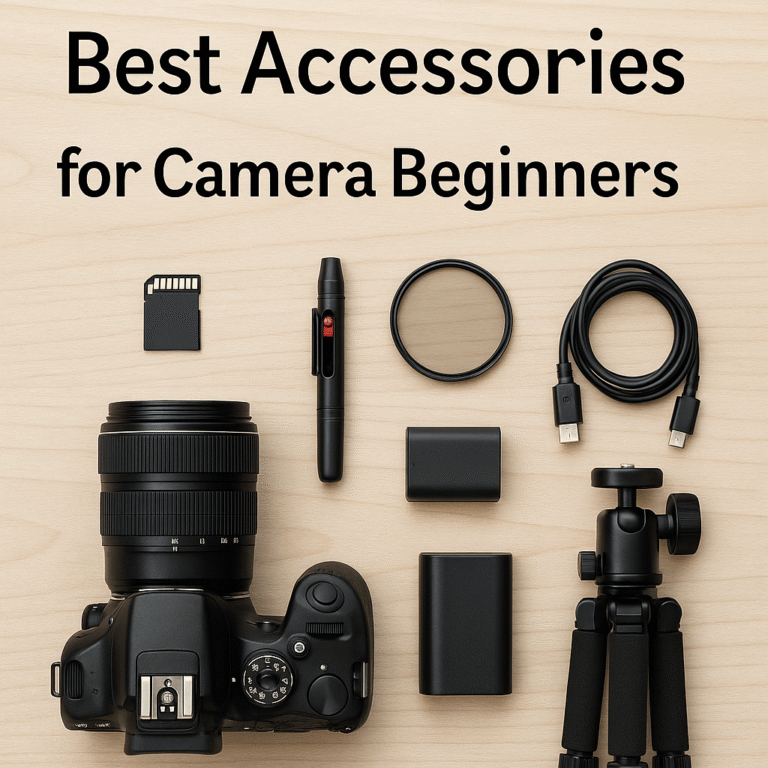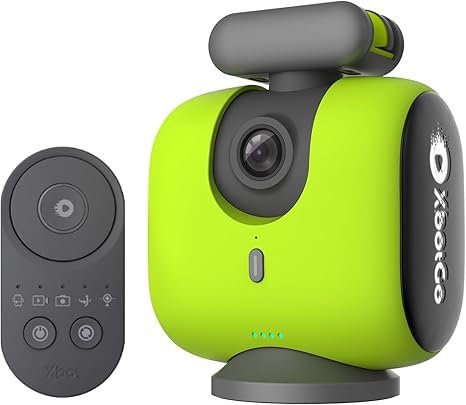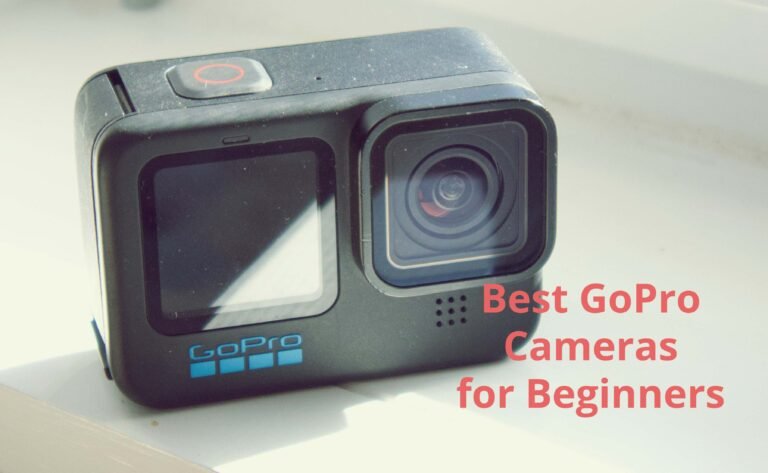Key Features to Consider When Buying Your First Camera
When embarking on the journey of buying your first professional camera, it is crucial to evaluate certain key features that directly influence your photography experience. To begin with, the sensor size plays a significant role in image quality and depth of field. Full-frame sensors, while generally more expensive, capture more light and detail, making them ideal for low-light conditions. However, cropped sensors can be a more budget-friendly option, particularly in the realm of the best cameras for beginners.
Next, consider the megapixel count of the camera. While higher megapixels can lead to larger images with more detail, for most beginner applications, a camera with 16 to 24 megapixels will suffice. Yet, remember that a high megapixel count does not necessarily equate to better image quality; other factors contribute significantly as well.
Lens compatibility is another vital feature. The ability to change lenses allows for greater versatility in your photography, enabling you to explore various styles. Opting for a camera system with a diverse range of lenses can be advantageous. Also, pay attention to the autofocus capabilities, as these are essential for capturing sharp images, especially in fast-moving situations. Look for cameras with fast and accurate autofocus systems, as this will simplify the shooting process significantly.
Overall build quality and ergonomics are paramount, particularly for those who value comfort during long shooting sessions. A camera that is easy to hold and navigate will encourage experimentation and creativity. Additionally, an intuitive menu layout will reduce the learning curve, allowing novice photographers to focus on their subjects rather than getting bogged down by complex settings. Budget-friendly vlogging cameras often excel in this area, offering both usability and functionality.
In conclusion, being mindful of these features—sensor size, megapixel count, lens compatibility, autofocus capabilities, and ergonomics—will greatly assist you in making a well-informed decision when purchasing your first professional camera. By doing so, you can ensure that the camera you choose aligns with your photographic aspirations and requirements.
Setting a Budget for Your First Camera
When it comes to buying your first professional camera, establishing an appropriate budget is a crucial step in ensuring a positive experience. Cameras come in a wide range of price segments, each catering to different needs and levels of expertise. For beginners, the primary options are typically entry-level DSLRs, mirrorless cameras, and compact point-and-shoot models. Understanding what each category offers within various price ranges can aid in making an informed decision.
Entry-level DSLRs are a popular choice for new photographers and generally range from $400 to $800. These cameras typically provide good image quality, interchangeable lenses, and manual controls. A mid-range option, often priced between $600 and $1,200, introduces features such as improved autofocus and higher resolution sensors, enhancing the overall shooting experience. Mirrorless cameras, which have gained traction for their compact design and versatility, are available in similar price ranges. By allocating funds wisely between body and lenses, aspiring photographers can find equipment that delivers a blend of performance and user-friendliness.
Compact point-and-shoot cameras are the budget-friendly alternatives, with prices starting as low as $200 and reaching up to $600 for models with superior shooting capabilities. These cameras are lauded for their ease of use, making them ideal for those who prefer a more simplified approach to photography. It is important to note that when budgeting, potential buyers should also consider allocating additional resources for valuable accessories such as lenses, tripods, and memory cards. Whether opting for top rated cameras with friendly budgets or exploring budget friendly vlogging cameras, ensuring a holistic approach to budgeting will enhance the overall investment in photography gear.
By carefully analyzing desired features and functionality, photographers can create a budget that accommodates both their camera choice and necessary accessories, laying a solid foundation for their photographic journey.
Best Cameras for Beginners in Various Price Ranges
When embarking on the journey of buying your first professional camera, it is essential to identify a device that aligns with your skill level and budget. For beginners, the options are abundant, and selecting the right one can significantly impact your photography experience. Below, we examine some of the best cameras for beginners across various price ranges, ensuring that you have suitable choices whether you seek budget-friendly vlogging cameras or more advanced options.
Under $500: One of the top rated cameras with friendly budgets is the Canon EOS Rebel T7. This camera is known for its ease of use, offering an intuitive interface that guides beginners through the basics of photography. With a 24.1 MP sensor and built-in Wi-Fi, capturing and sharing quality images is seamless. Another excellent choice in this price range is the Nikon D3500. This lightweight DSLR features a 24.2 MP sensor, an extensive battery life, and a Guide Mode to assist in mastering camera settings.
- This Jerry’s Photo DSLR Camera Package Includes Transcend 32GB High Speed Class 10 SD Memory Card ,USB Card Reader ,Batt…
- Canon EOS 2000D / Rebel T7 DSLRCamera Body (International Version )- 24.1MP APS-C CMOS Sensor, DIGIC 4+ Image Processor,…
- Canon EF-S 18-55mm F/3.5-5.6 IS II Zoom Lens – EF-S-Mount Lens/APS-C Format, 28.8-88mm (35mm Equivalent) ,Aperture Range…
$500 – $1,000: For those willing to invest a little more, the Sony Alpha a6000 is an outstanding option. This mirrorless camera boasts a 24.3 MP sensor and fast autofocus, making it perfect for capturing fleeting moments. Additionally, its compact design lends itself well to vlogging, making it one of the best cameras for beginners in this category. Similarly, the Fujifilm X-T200 offers an appealing combination of retro aesthetics and modern features, including high-quality films and a 24.2 MP sensor.
- World’s fastest AF at 0.02 sec. W/ real-time AF & Object tracking
- Wide 425-phase/425-contrast detection AF points over 84% of sensor
- 24.2MP APS-C Exmor sensor w/ front end LSI and ISO up to 51,200
Above $1,000: For advanced newcomers, the Canon EOS M50 Mark II is a strong contender that delivers exceptional image quality and user-friendly controls. It is particularly lauded for its video capabilities, making it an ideal choice if you’re considering shooting vlogs. The Panasonic Lumix GH5 is another excellent investment, providing superb videography features alongside versatile photo capabilities, catering well to those serious about their photography journey.
- Bundle Includes: 1 x Canon EOS M50 Mark II Mirrorless Digital Camera with 15-45mm Lens (Black), 1 x SanDisk 64GB Extreme…
- PERFORMER: The EOS M50 Mark II carries and builds on the strong performance of the popular EOS M50 with improvements tha…
- FAST: The autofocus locks onto the subject faster, and Eye Detection is improved so it recognizes the eyes and face furt…
In conclusion, when purchasing a camera, it is essential to assess the features to consider when buying a camera, including ease of use, image quality, and budget. By reflecting on these factors and the recommendations listed above, you can make an informed decision that best suits your photography needs.
Vlogging on a Budget: Best Cameras for Beginner Vloggers
As an aspiring YouTuber or content creator, selecting the right gear is crucial, especially when embarking on the journey of vlogging on a budget. Fortunately, there are numerous budget-friendly vlogging cameras available that can provide excellent video quality without straining your finances. When buying your first professional camera, there are several features to consider, particularly for vlogging. Key elements such as image stabilization, microphone input, and flip screens can significantly enhance your ability to create engaging content.
Image stabilization is essential for producing smooth and professional-looking videos, especially when you are on the move. Many cameras equipped with electronic or optical stabilization help to counteract shaky footage, which can ruin the viewer’s experience. Furthermore, having a microphone input allows you to enhance audio quality by attaching external microphones, ensuring that your voice is clear and crisp, which is vital for vlogs.
Another feature beneficial for vlogging is a flip screen, which allows for easy framing while recording. This feature is particularly attractive to solo content creators as it enables them to see themselves while filming, thus ensuring they remain in the shot. When scouting for the best cameras for beginners, look for models that excel in these areas.
Some top-rated cameras with friendly budgets that are ideal for beginner vloggers include the Canon PowerShot G7 X Mark II and the Sony ZV-1. Both models are lauded for their ease of use, sophisticated features, and superior video quality. These options provide a great starting point for anyone serious about vlogging but who does not want to invest heavily in equipment right away. By focusing on key features and practical models, you can ensure a successful start in the world of vlogging.
If you liked what you have read above, please leave a comment down below and we will reply back as soon as we possibly can. Thanks.






